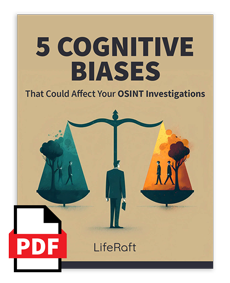Climate change represents an increasingly pressing issue due to its potential to cause significant and far-reaching impacts across society. The earth's average temperature is rising at an unprecedented rate, which has already had severe consequences on food and water supplies, infrastructure, human health, and the livelihoods of millions of people worldwide. Yet the worst may be yet to come.
Even rapid and drastic reductions in greenhouse gas emissions this decade will not be able to prevent a global climate crisis, according to recent reports by the Intergovernmental Panel on Climate Change. This will require urgent and collective action from individuals, cities, and nations to adapt to a warmer planet.
Businesses will need to adapt, too. Climate change has increased the frequency and severity of extreme weather events, which can disrupt supply chains, damage physical assets, and impair employee safety. Failure to address these risks can lead to reputational harm, as stakeholders may view a company as being unprepared or unwilling to address the urgent issue of climate change. Additionally, regulatory bodies and investors are increasingly scrutinizing companies' climate-related risks and disclosures. Failure to address these risks, in some jurisdictions, has started to result in legal and financial consequences for executives.
Therefore, it is essential for security leaders to take action to enhance climate resilience in order to ensure the long-term viability of their organizations. Enhancing climate resilience benefits businesses by reducing the risk of financial losses resulting from climate-related events. Additionally, companies that show leadership in addressing climate risks may be viewed more favorably by investors, customers, and other stakeholders – potentially leading to increased business opportunities and enhanced brand reputation.
In a world where extreme weather will become more frequent, climate resiliency can represent an enormous advantage in the marketplace. In this report, we outline seven strategies that security teams can use to adapt to a warmer planet. And by implementing these strategies, businesses can prepare themselves for the challenges posed by climate change and continue to thrive in the years ahead.
Learn More: How to Use OSINT to Safeguard Your Company’s Reputation Online
1. Map facilities against climate change risks

To begin with, corporate security teams should start mapping corporate assets to assess their organization’s exposure to climate change. This can be accomplished by geo-locating facilities and overlaying them against climate change risks as a heat map.
By mapping their assets, analysts can identify vulnerabilities within their facilities, operations, critical processes, and supply chains. This information provides security leaders the information they need to prioritize risk management efforts and allocate resources more effectively – ensuring that critical assets are protected and that the most significant risks are addressed first. And by understanding which assets are the most at risk, security teams can implement measures such as backup power systems, flood barriers, or relocating critical operations to less dangerous areas.
Mapping climate risks can also help corporate security leaders advise decision-makers with future investment decisions. What parts of the city face the highest risk of flooding? Will locating this facility on the outskirts of town expose our employees to forest fires? Which countries face the highest risk of political turmoil as a result of resource scarcity? Incorporating climate resilience into investment decisions will help ensure that your business is better prepared to respond to climate-related challenges.
2. Conduct scenario modeling exercises
Security leaders can enhance corporate climate resilience by incorporating scenario modeling into their risk management plans. Scenario modeling involves forecasting how climate change will impact properties, real estate portfolios, and other assets in the future. This approach helps organizations to understand location-level risk exposure and the vulnerability of their assets.
To incorporate scenario modeling, analysts should start by developing a detailed understanding of the potential physical risks associated with climate change, such as sea-level rise, extreme weather events, and wildfires. They can then create different scenarios that model how these risks could impact their assets in the future. For example, they could model scenarios where sea levels rise by different amounts or where certain regions experience more frequent and severe hurricanes.
Managers should also consider the potential economic impacts of climate change, such as changes in supply chain logistics or energy costs. This will allow them to develop more comprehensive scenarios that incorporate both physical and economic risks.
Once the scenarios have been developed, corporate security leaders should use them to assess their organization's climate resilience and risks. By modeling different environmental scenarios, they can gain a better understanding of how climate change could impact their assets and operations in the future. This allows them to identify areas where they may need to invest in new infrastructure or implement other measures to reduce their vulnerability.
Scenario modeling can also help organizations communicate the risks associated with climate change to stakeholders. By providing a tangible model of how climate change could impact their operations, corporate security leaders can engage stakeholders in discussions about potential future states of operation and how to mitigate risks associated with them.
3. Re-evaluate business continuity plans
Because climate change has increased the likelihood and severity of extreme weather events, security leaders should re-evaluate their business continuity plans – updating emergency response procedures, identifying alternative supply chain sources, and investing in backup power and data systems.
Major disruptions can have a significant impact on an organization's operations, employees, customers, and reputation. But by re-evaluating and revising their business continuity plans, security leaders can ensure that their organization is better prepared to cope with events of greater intensity, frequency, and duration.
Additionally, security leaders should also consider the increased likelihood of multiple crises and disasters occurring simultaneously. For example, a severe hurricane may disrupt operations while also causing widespread power outages and supply chain disruptions. Re-evaluating and revising plans can help ensure that the organization has the resources and capabilities to respond to all of these challenges simultaneously.
Moreover, managers must also consider different kinds of events than previously thought likely for a region. For example, an extreme heatwave in the Pacific Northwest or a severe cold snap in southern Texas may have been considered unlikely in the past. Climate change, however, has increased the likelihood of extreme weather events occurring in areas where they were previously thought to be impossible. This will require re-evaluating and revising plans can help organizations prepare for these types of events and reduce their potential impact.
Finally, businesses should invest in mobile technology that enables their employees to work remotely and stay connected in challenging conditions. Extreme weather events can disrupt operations, forcing organizations to conduct costly shutdowns. But by providing laptops, mobile phones, and other devices, employees can still access critical business applications and communicate with colleagues and clients from anywhere, at any time.
4. Embed climate risks into enterprise risk management programs
Climate change presents a significant risk to organizations, and it is essential that senior leaders understand the potential impact on their operations, financial performance, and reputation. To ensure that these risks receive the attention they deserve from top executives and the board of directors, security leaders should embed climate risks into enterprise risk management strategies.
By embedding climate risks into these programs, security leaders can ensure that these risks are treated as strategic risks that require C-level attention. This can be achieved by aligning climate risks with the organization's overall risk appetite and risk tolerance, identifying the potential impact of climate risks on the organization's objectives and stakeholders, and prioritizing climate risks alongside other strategic risks.
Furthermore, many jurisdictions are implementing regulations and policies related to climate change and climate risk. Embedding climate risks into enterprise risk management programs can help organizations comply with these regulations and avoid potential fines and penalties.
5. Adopt or enhance existing threat intelligence programs
Threat intelligence is the process of collecting, analyzing, and sharing information about potential and existing threats to an organization. This involves the use of a variety of data sources, including open-source data, dark web monitoring, and proprietary information feeds, to provide insights into the tactics, techniques, and procedures used by threat actors. Savvy security leaders have long exploited threat intelligence to protect their organizations against both cyber and physical security risks. But in the context of enhancing climate resilience, such techniques have enormous potential too.
For starters, intelligence can act as an early warning system for climate-related risks. By monitoring environmental conditions, weather patterns, and other factors, organizations can proactively identify potential threats and take action to mitigate the impact of these risks. By identifying potential hazards ahead of time, organizations can take action to minimize the impact of these threats to their operations and assets, reducing the possibility of disruption and loss.
Moreover, threat intelligence can help businesses make more informed investment decisions related to climate resilience. By providing timely and accurate information about climate-related disruptions, organizations can make better decisions about risk mitigation, investment in climate-resilient infrastructure, and other key decisions that impact the organization's ability to prosper on a warmer planet.
Furthermore, as climate change continues to increase in severity, regulatory frameworks are likely to become more stringent. Companies may face increased scrutiny from stakeholders, including customers, investors, and regulators. By adopting or enhancing existing threat intelligence programs to become more climate resilient, businesses can demonstrate their commitment to sustainability and risk management. That can go a long way toward building trust and maintaining a social license to operate.
6. Direct physical risk mitigation
Preparing for extreme weather represents the most obvious and perhaps largest challenge of adapting to climate change. But businesses can minimize these vulnerabilities through smart investments at company facilities.
For example:
- Fortifying Foundations: Businesses can reinforce the foundation of their buildings to better withstand flooding or other extreme weather events.
- Installing Storm Shutters: Storm shutters can protect windows and doors from high winds and debris during hurricanes and other severe weather events.
- Building Green Infrastructure: Green infrastructure, such as green roofs and rain gardens, can help absorb excess water during heavy rainfall, reducing the risk of flooding.
- Installing Sump Pumps: Sump pumps can help remove excess water from buildings during flooding events, reducing the risk of water damage.
- Using Waterproofing Techniques: Waterproofing techniques, such as sealants and coatings, can help protect buildings from water damage during extreme weather events.
- Reinforcing Roofs: Roofs can be reinforced with stronger materials and bracing to better withstand high winds and debris during hurricanes and other severe weather events.
- Upgrading HVAC Systems: Upgraded HVAC systems can help maintain a stable temperature and humidity level inside buildings, reducing the risk of damage from extreme heat or humidity.
- Installing Backup Generators: Backup generators can provide emergency power during power outages, ensuring that critical systems remain operational during extreme weather events.
- Implementing Climate-Resilient Landscaping: Climate-resilient landscaping, such as using drought-resistant plants, can reduce the demand for water and minimize the risk of damage from extreme heat or drought conditions.
- Re-evaluating Supply Chains: Businesses can also enhance their climate resilience by strengthening their supply chains. For example, businesses can work with suppliers to identify and mitigate climate-related risks, or diversify their supply chains to reduce their reliance on regions or suppliers that are particularly vulnerable to climate change impacts.
These are just a few examples of the many ways that businesses can reinforce their assets to better withstand the physical impacts of climate change. But by investing in climate-resilient infrastructure and adopting sustainable business practices, businesses can reduce their risk of damage and disruption from extreme weather events and other climate-related challenges.
7. Re-evaluate employee travel

Climate change could put an end to the culture of the corporate road warrior. For starters, governments look poised to put higher prices on emissions in the form of carbon taxes or cap-and-trade schemes. That will make the prospect of employee travel increasingly expensive in the years ahead. Moreover, warmer temperatures will lead to a spike in political turmoil and extreme weather events. Keeping employees safe as they crisscross the globe in this environment will become more challenging. So how should security leaders approach this issue?
Firstly, businesses should expand their virtual meeting capabilities to reduce the need for physical travel. This may involve investing in video conferencing technology, collaboration software, and other tools that allow employees to participate in meetings and work together on projects without having to travel to a central location.
If employee travel is still deemed necessary, leaders will have to invest more resources in travel security programs. This should involve identifying the areas where their employees frequently travel, assessing the risks associated with those locations in terms of climate-related events, and establishing means of communication during emergency situations. This risk assessment can inform the development of travel security policies and procedures that address the specific challenges posed by climate-related risks.
Finally, businesses should invest in training and education programs that help employees understand the risks associated with climate-related events and how to mitigate those risks. This may involve providing training on travel security, emergency response, and other topics, as well as promoting awareness of climate-related risks and the need for resilience across the organization.
The Bottom Line on Corporate Climate Resilience
A changing climate presents significant risks and challenges for businesses across industries. However, it also provides an opportunity for organizations to take action and enhance their climate resilience. By implementing the seven strategies outlined in this white paper, businesses can better adapt to changing environmental conditions and mitigate potential impacts.
It is important for businesses to understand that enhancing climate resilience is not a one-time effort, but an ongoing process that requires continuous evaluation and adaptation. By prioritizing climate resilience, businesses can not only protect themselves against potential risks and disruptions but also contribute to a more sustainable future. It is our hope that this white paper provides a useful guide for businesses seeking to enhance their climate resilience and take proactive steps toward a more sustainable future.

